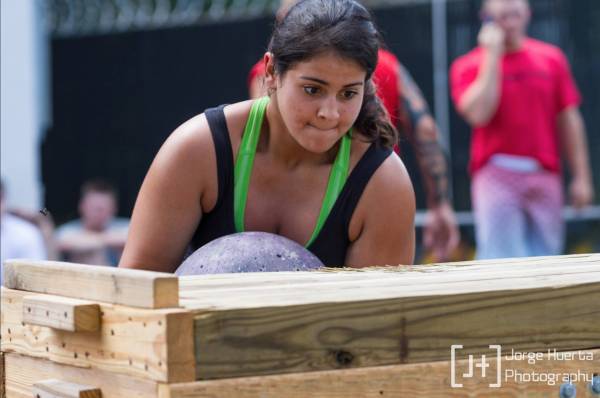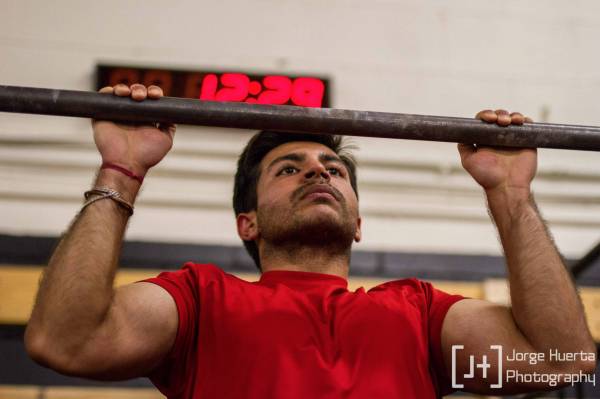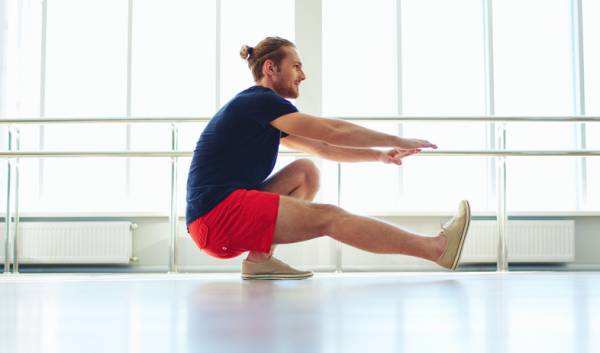“Movement patterns,” “motor programs,” what does it all mean? In the last couple of years the fitness field has become inundated with these terms. Despite the apparent trendiness of the concept, motor control is an extremely important facet of athletic performance, and it’s a rather involved topic that utilises pieces of neurology, neuroscience, psychology, and exercise.
That said, developing a practical understanding of motor control and how it can help you be a better athlete is straightforward. Rather than wasting time on the complexities of the cellular processes, I’m going to talk about what motor control means for athletes and share some easy steps you can take to master your own.
The Right Perspective
For many athletes, the first step to better motor learning involves a shift in the way they see things. Research shows the most important aspect of motor learning is engagement in the process. While this may seem like common sense, the frustrating reality is that many athletes who exhibit poor motor control do so because they don’t respect a simple truth: every movement is a skill.
“You have to respect the skill before you can excel at it.”
It doesn’t matter if you’re trying to snatch a personal record or open a pill bottle. Every physical task we perform is a learned skill. We just take most of them for granted. So if you want to move your body better, you need to change your perspective. You have to respect the skill before you can excel at it.
Presence and Purpose
One of the easiest ways to improve how you engage with something is to be more present. It drives me crazy when I see patients doing their exercises while looking at their phone and then tell me they didn’t feel it. Of course they didn’t. They weren’t trying to. They were in another world.
Movement starts in the mind, and intention begets action. It’s why when we see someone stomping down the street with hands clenched and shoulders tensed, we know he or she is angry without hearing the person say a word. It’s also why thinking, “I’m going to press this weight,” or, “I’m going to plant my feet, get my breath, squeeze my lats, and press,” will yield wildly different results.

Not all repetitions are equal. Just doing something to do it isn’t good enough. Every single rep of every single movement needs to be performed with purpose and presence. Focusing your intentions rep after rep, set after set may not seem like some sexy “hack,” but that’s precisely the point. It’s hard to be present and engage the process when you’re busy looking for shortcuts to bypass it.
Extrinsic Learning vs. Intrinsic Learning
When learning a new skill there are two processes we use to collect data:
- Extrinsic learning is more or less conscious. It involves understanding instruction, technique, and other intellectual insights into what we’re practicing.
- Intrinsic learning, on the other hand, is the experiential data gathered through our somatosensory system.
While both processes play an important role in skill acquisition, many athletes focus too much on the extrinsic stuff. When you’re constantly looking to your coach or an outside source for what’s wrong with your technique, you may be unintentionally ignoring what your body’s telling you. This is part of why many coaches use minimal instruction, and instead they ask questions to lead the athletes to their own answers.
“People frequently want some magic program or assistance exercises that will iron out all of their problems.”
Our bodies have an amazing ability to evaluate their own performance and position. They can tell us all sorts of things but to hear it we need to be listening.
Results Focused vs. Results Driven
When an athlete asks me to help him get a better squat, 99 times out of a hundred he actually wants me to help him squat more. People frequently want some magic program or assistance exercises that will iron out all of their problems. If I’m dealing with an experienced athlete with years under the bar, then I’ll do my best to give him what he’s looking for. But if he’s still a beginner, I’m usually more concerned with seeing how he squats than looking at his program. Squatting heavier and squatting better aren’t always the same thing and frequently what people need is more practice, not more weight.
We all train for different reasons. I’m a firm believer that concrete goals are an important part of making progress. But it’s easy to get so wrapped up in what we want to accomplish that we forget what will actually get us there. You must be engaged in the practice of the skill itself, not simply the results you want to get.

Mastery of the basic skills involved is what will ultimately drive your results. There’s nothing wrong with chasing big numbers and faster times, just make sure you’re focused on the process and not solely the end goal. If you treat your training and workouts as a means to an end, you’re never going to achieve the amount of presence and engagement with the process that you need to master the actual movements.
Muscle Activation and Corrective Exercise
There seems to be mixed feelings regarding the idea of muscle activation or corrective exercises. Some coaches and clinicians swear by them, while others think the idea that there exists a magical set of exercises that will automatically improve your technique in another movement is preposterous. As with most things, I fall somewhere in the middle.
From my perspective, corrective exercise is meant to be exactly that: corrective. A high-level athlete who moves well probably doesn’t need much correction. That said, there are some athletes (and coaches) who like to do specific muscle activation work prior to a training session. Keeping with our squat example, relevant exercises might be bridges, clamshells, or quadruped glute activation drills. If you enjoy this type of warm up and it works for you, then have at it. But I’m not convinced it offers any specific benefit above and beyond squatting with slowly increasing resistance until you get to your work weight.
“You must be engaged in the practice of the skill itself, not simply the results you want to get.”
I do think corrective exercises can be great building blocks for someone who is extremely deconditioned. They can also be useful in helping people develop kinesthetic awareness. Showing someone an exercise that activates her lats may not automatically make the muscle work when she’s doing something else, but it should teach her what activating that muscle feels like. Once a person knows that, it’s immensely easier to do it purposefully during a more complex movement.

The Best Ways to Improve Your Motor Control
- Acknowledge and respect that every movement is a skill.
- Be present and purposeful in your movements. Don’t be distracted.
- Try not to overly rely on external coaching. Spend more time listening to your body.
- Prioritise skill practice and acquisition over the pursuit of numbers. Master the skills that drive the process and the results will follow.
- Utilise muscle activation drills to teach yourself what muscle activation feels like. Practice using that new feeling while performing more complex movements.
There are some coaches out there who can do amazing things with certain modalities, but personally I’m not a fan of physiological magic tricks. I believe in taking advantage of what the body does naturally – not trying to use human cleverness to bypass nature.
The most important aspect of improved motor control is recognising every movement is a skill and to develop those skills you need presence and practice. It’s simple, but as you know, simple doesn’t always mean easy.
More like this:
- Reset Your Mobility With These 3 Essential Movement Patterns
- 3 Reasons You Aren’t Getting Any Stronger
- 2 Things You’ve Got All Wrong About Movement
- New On Breaking Muscle UK Today
Photos 1, 2, & 3 courtesy of Jorge Huerta Photography.
Photo 4 courtesy of Shutterstock.






